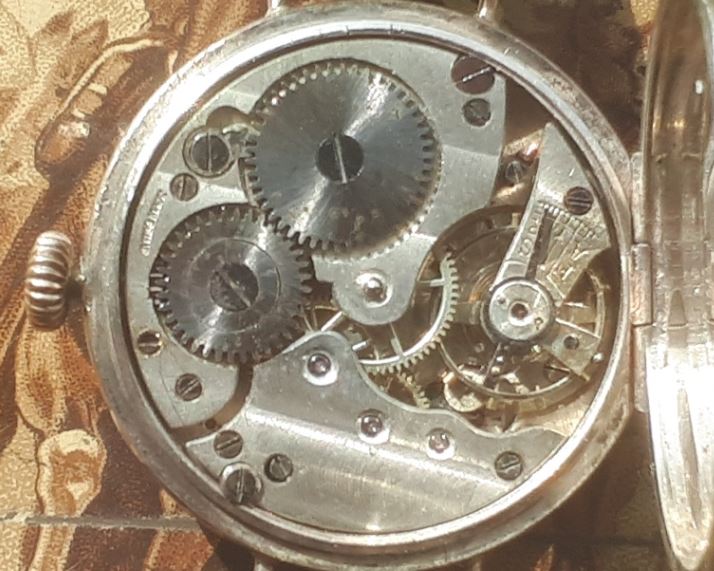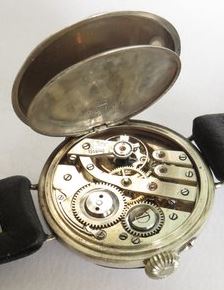Last updated on June 3, 2024
What is an ébauche?
An ébauche is an unfinished movement and is sold as such. In Switzerland, before 1850, an ébauche consisted of only the plate, bridges, fusee and the barrel. It was known as a blanc and was finished at the établissage. After 1850, the modern ébauche was a movement, with or without jewels, but always without the escapement, balance, mainspring, dial and hands. Generally, all of the included components were roughly finished, meaning that the watchmaker had the opportunity to contribute significantly to the quality of the end product. In this post, we will discuss the steps taken by a watchmaker when completing an ébauche movement.
For much of the history of watchmaking in Switzerland, a watchmaker would obtain an ébauche as well as other components, including the case, escapement, balance and hairspring from multiple suppliers before finishing and regulating the completed watch. These timekeeping components were known collectively as an ‘assortment’.
The components referred to in this post can be found in our Antique watch glossary. There is also a Wikipedia ébauche entry.
What did the watchmaker have left to do?
The watchmaker would receive the ébauche as a kit. However, there was still some work for the watchmaker to do before the ébauche movement was ready for sale. The step-by-step description below is for a fusee movement, which gradually became obsolete in Swiss watchmaking soon after the 1850s.
Movement plates
1. The movement plates and bridges could be gilded or otherwise polished to improve the aesthetics. Gilding gives an object a gold appearance at a fraction of the cost of creating a solid gold object. In addition, a solid gold piece would often be too soft or too heavy for practical use. In addition, the dust cover would need gilding or polishing and the retaining steel spring blued.
2. The bottom plate would then be gilded or polished. The pivot holes would then be opened to the correct size or jewelled. The holes for the winding and spring barrel arbors would be opened to size. Additionally, holes would be drilled to take the fixing pins that held the plates together.
3. The top plate would be gilded or polished as per the other plates. The watchmaker may opt to engrave their name or perhaps the name of the retailer. The top plate pivot holes would be sized or jewelled. The regulator would be added and the fast/slow indicators would be engraved according to the intended market.
Gear train
4. The gear train would need to be assembled from the mainspring barrel through to the fourth wheel. The bridges and barrel could be gilded. The pivot holes in the plates would be opened to the correct size and/or jewelled according to the quality of the watch. The fusee would need to be assembled and the wheel grooved for the chosen chain size.
Escapement
5. The watchmaker would select the appropriate escapement from their range of stock. This could vary according to the quality of the watch they were producing. If they produced a range of watches to different standards, they may have different escapements for higher quality watches than the budget end of their range.
Bluing
6. Various components would be blued. Bluing steel is a process that tempers the steel and creates a protective oxidised coating that helps to prevent watch hands from rusting. First, the steel is cleaned and polished. Then the steel is heated, over a layer of brass filings, to a high temperature. The layer of brass filings is used to maintain a stable temperature exchange. The steel changes colour from gold to brown and then purple before it settles to blue. Components that were typically blued include the hands, screws, the fusee stop and spring.
Balance
7. As with the escapement, the watchmaker would choose their preferred balance, hairspring and mainspring. The balance cock would be engraved and gilded if required. These timekeeping components would then be fitted to the ébauche, completing the assembly of the movement.
8. Once the balance assembly had been installed the movement was ready to be calibrated for accurate timekeeping. The enamel dial and hands would be fitted. The dial may be left blank or it may include the name of the watchmaker or retailer. Higher quality watches would be regulated and adjusted in a number of different positions. Generally, the timekeeping process would run for about a week before the watch was ready.
9. The completed movement would be fitted to a suitably sized case with a mineral crystal lens. The watch would now be ready to be distributed to the retailer. And thus, a future antique pocket watch is born.
The finished product
The ébauche ‘kit’ gave the watchmaker a considerable degree of scope. For instance, the watchmaker could adopt a minimalist approach and finish the movement with the bare necessities. A 7-jewel movement, a white metal case and basic timekeeping components would constitute a reliable ‘budget’ watch for the average man on the street. However, the watchmaker could create a high-quality watch with a case made of precious metal, and a fully-jewelled movement could be gilded and fitted with high-end timekeeping components. Both options were possible from the same ébauche.
Related content
A list of additional posts regarding antique watches can be found on the Guides page.

